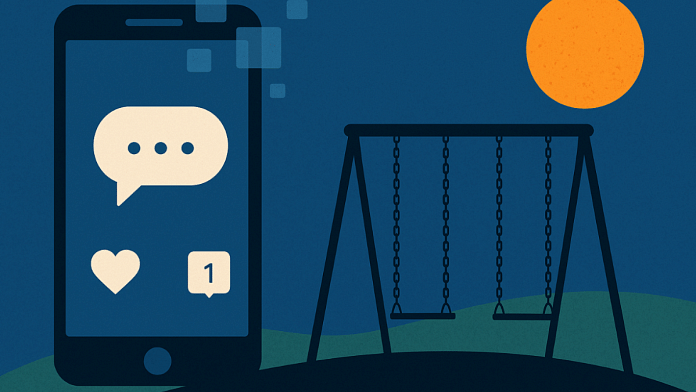Thank you dear subscribers, we are overwhelmed with your response.
Your Turn is a unique section from ThePrint featuring points of view from its subscribers. If you are a subscriber, have a point of view, please send it to us. If not, do subscribe here: https://theprint.in/
If you’re a millennial or Gen Xer, chances are your child entered their teen years sometime after 2010—right around the time everything about growing up began to change. That’s certainly been my experience as a parent of twoand it’s what prompted me to reflect on how childhood, learning, and focus have evolved in the digital age.
When I think back to my own childhood, the most formative moments weren’t structured or scheduled. They happened during long, uninterrupted stretches of time where I could follow my curiosity wherever it led. Whether it was reading, sports, or simply thinking, I had the space to get completely absorbed in something without constant pings or distractions. That ability to concentrate deeply has stayed with me throughout my life—and I’m convinced it shaped how I think, solve problems, and learn.
But lately, I’ve found myself asking: would I have developed that same capacity for focus if I’d grown up today?
That question hit home even harder after reading The Anxious Generation by Jonathan Haidt. It’s a powerful—and at times, unsettling—exploration of how smartphones and social media are reshaping childhood and adolescence. Haidt argues that a fundamental shift occurred in the early 2010s, when technology moved from the periphery of kids’ lives to the very center. The effects, he says, have been profound.
What stood out most to me is how Haidt frames the problem as two crises unfolding simultaneously:
- Digital under-parenting, where kids are left to navigate addictive technologies largely on their own, and
- Real-world over-parenting, where we’ve become so risk-averse that we’ve removed many of the freedoms that once helped young people grow into capable, resilient adults.
It’s a paradox: we’ve become hyper-cautious in the physical world while being remarkably hands-off in the digital one.
I’ve seen this contrast play out in my own home. When my first born was in middle school, social media existed, but it hadn’t yet become all-consuming. By the time my younger one reached the same age a few years later, being online wasn’t just common—it was a requirement for social belonging. The shift was fast, and it was total.
Haidt states that today’s kids spend an estimated 6–8 hours a day on recreational screen time. That’s time not spent outdoors, reading, building things, or having face-to-face conversations. We’re witnessing the rise of what Haidt calls the “phone-based childhood,” and it’s coming at the expense of what used to be the norm: play, exploration, and self-directed learning.
The consequences are real—and growing. Anxiety and depression are rising sharply. Attention spans are shrinking. Many teens struggle to be present in the real world, and opportunities to develop independence and social-emotional skills are being lost in the noise of constant digital stimulation.
This isn’t just a parenting issue—it’s a societal one. As someone who values focus, creativity, and long-form thinking, I worry about what happens when an entire generation grows up with limited access to those mental states. Innovation doesn’t come from swiping; it comes from thinking deeply, iterating, and wrestling with problems over time. If we don’t create environments that nurture those abilities, we risk losing more than just childhood innocence—we lose future problem-solvers, leaders, and inventors.
Haidt’s call to action is clear:
- Delay smartphones until kids are emotionally ready.
- Verify age for social media platforms.
- Make schools phone-free and create public spaces that encourage interaction and exploration.
- Redesign childhood—with more opportunities for real-world play, moderate risk, and autonomy.
Importantly, this isn’t about rejecting technology. It’s about using it intentionally—and creating boundaries that protect what makes growing up meaningful. No one can solve this alone. We need collaboration between parents, educators, tech companies, and policymakers. We also need open dialogue—because the world our kids inherit will depend on the choices we make right now.
If you’re raising children, mentoring young people, or leading teams who will shape the next generation, The Anxious Generation is essential reading. It’s not just a book—it’s a mirror and a roadmap.
💬 How are you navigating screen time, focus, and resilience—at home or in the workplace? I’d love to hear your thoughts.
#DigitalWellbeing #ParentingInTheDigitalAge #Focus #Leadership #Education #MentalHealth #FutureOfWork #TheAnxiousGeneration
These pieces are being published as they have been received – they have not been edited/fact-checked by ThePrint.


